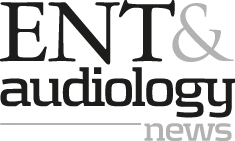The management of FBO has evolved, with most cases now done by upper GI clinicians. Biopsies should be taken routinely to investigate possible eosinophilic oesophagitis.
In acute soft food bolus obstruction (FBO), uncovering the root cause is as crucial as relieving the blockage. Our recent ENT-led data reveal that many patients admitted for FBO never receive the biopsies needed to diagnose or exclude eosinophilic oesophagitis (EoE), the leading culprit behind these emergencies [1].
When left undiagnosed or diagnosed late, EoE can cause a wide range of complications, from difficulty swallowing and reduced enjoyment of food and social eating, to weight loss and malnutrition. This was presented orally at the most recent British Academic Conference of Otolaryngology (BACO) 2023 in Birmingham, United Kingdom.

Background and objectives
Food bolus obstruction occurs when ingested material lodges in the oesophagus, leading to acute admission. While many cases resolve spontaneously, persistent impactions often require endoscopic removal. In many hospitals in the United Kingdom, soft FBO above the sternal notch falls under otolaryngology or ear, nose and throat (ENT) care, whereas lower obstructions are managed by gastroenterologists (GIs) or general surgeons.
EoE – an allergic chronic inflammatory disease of the oesophagus – has emerged as the most common predisposing factor for FBO. International guidelines recommend obtaining at least six biopsies from three levels of the oesophagus whenever food bolus is removed, to diagnose or rule out EoE [2].
Our study set out to audit adult FBO admissions in an ENT ward over a four-year span, assess intervention types and evaluate how often EoE work-ups were performed.
Demographics and seasonal patterns
- A total of 120 FBO admissions were identified.
- 68% of admissions were male, with a median age of 54.5 years (range 16–94), versus 69.5 years (16–92) for females.
- Animal-based foods caused 87% of obstructions; chicken (36%) and steak (22%) topped the list.
- Admissions peaked during summer and winter holidays, and clustered around weekends and Mondays – likely reflecting dietary habits and social dining.
These patterns hint at dietary triggers and lifestyle factors that may predispose to oesophageal impaction.
Intervention outcomes and complications
Nearly half of FBO cases (49%) resolved within 24 hours without instrumentation. For the remaining 51%:
- 67% underwent flexible endoscopy (OGD);
- 31% underwent rigid oesophagoscopy (RO);
- One patient required a combined approach due to cervical osteophytes
Overall complication rates were low but notable: oesophageal tears occurred in 2.4% of OGD cases and 5.3% of RO cases. The data mirror broader literature showing similar safety profiles for both techniques, although general anaesthesia is mandatory for RO and sometimes for OGD in uncooperative patients.
Biopsy practices and EoE detection
Despite guidelines, only 48% of inpatient OGDs and 5% of ROs included biopsies. A higher proportion of biopsies were taken during outpatient OGDs – 92%. Among those biopsied:
- 50% of inpatient OGDs revealed EoE.
- 46% of outpatient OGDs revealed EoE.
- One case of adenocarcinoma was identified
Alarmingly, 71% of all OGDs (inpatient + outpatient) failed to collect the recommended six biopsies from three oesophageal levels. Furthermore, 53% of EoE reports omitted an exact eosinophil count per high-power field, undermining diagnostic clarity.

Figure 1: A number of admissions of patients with food bolus obstruction each month of a year.

Figure 2: A number of admissions of patients with food bolus obstruction each day of a week.
Follow-up gaps
Among the 100 patients whose FBO either resolved spontaneously or who did not undergo OGD with biopsies:
- 54% had no follow-up arranged.
- 16% were scheduled for outpatient OGD (25% of these did not occur).
- 4% for transnasal oesophagoscopy (TNO) (50% did not occur).
- 11% for barium swallow.
- 5% for ENT clinic review only.
- 4% of patients’ general practitioners (GPs) were advised to organise OGD or barium swallow.
These figures underscore a systemic failure to investigate underlying pathologies, leaving many EoE cases undiagnosed and at risk for recurrence [3].
Discussion
This audit exposes a critical gap in ENT-managed FBO care: underuse of biopsy protocols that detect EoE. Although spontaneous resolution of FBO is common, up to half of instrumented cases had an undiagnosed eosinophilic oesophagitis. Failing to secure adequate tissue samples means missing the chance to start targeted therapies – dietary management, proton pump inhibitors or topical steroids – that can prevent repeat obstructions.
The demographic skew toward younger males aligns with known EoE epidemiology, and seasonal peaks suggest environmental or dietary influences [4, 5]. While ENT surgeons excel at acute obstruction relief, comprehensive oesophageal evaluation often falls outside their routine practice.
Clinical complications and recommendations
- Admit FBO under GI care when feasible. Gastroenterologists can both remove boluses and perform thorough oesophageal biopsies in one session.
- Standardise biopsy protocols in ENT and GI units. When OGD or TNO is used, teams should commit to six biopsies from upper, middle and lower oesophagus under conscious sedation or anaesthesia.
- Enhance follow-up pathways. Every patient treated for FBO should receive clear outpatient plans for endoscopic assessment, with robust reminder systems to prevent non-attendance.
- Interdisciplinary collaboration. Regular ENT-GI joint meetings can streamline referral criteria, optimise scheduling and share best practices, with involvement of the referrers – either GPs or accident and emergency (A&E) doctors.
Implementing these steps will bridge the gap between acute management and long-term care, ensuring underlying EoE is neither ignored nor undertreated.
Conclusion
Resolving food bolus obstruction is only half the battle. This study highlights that without systematic biopsies and follow-up, many patients remain vulnerable to recurrent impactions driven by undiagnosed eosinophilic oesophagitis. By adopting guideline-driven biopsy techniques, refining admission pathways and strengthening ENT-GI collaboration, hospitals can transform FBO admissions from episodic crisis management to comprehensive, preventive care.
References
1. Misirovs R, Kamusella A, Miller M, Majumdar S. Underlying Diagnosis of Food Bolus Obstruction Acute Admissions to Otorhinolaryngology: A Shift to Provide the Best Care as per the Current Guidelines. Medicina 2025;61(6):1047.
2. Lucendo AJ, Molina-Infante J, Arias Á, et al. Guidelines on eosinophilic esophagitis: evidence-based statements and recommendations for diagnosis and management in children and adults. United European Gastroenterol J 2017;5(3):335–8.
3. Birk M, Bauerfeind P, Deprez PH, et al. Removal of foreign bodies in the upper gastrointestinal tract in adults: European Society of Gastrointestinal Endoscopy (ESGE) Clinical Guideline. Endoscopy 2016;48(5):489–96.
4. Feraco A, Armani A, Amoah I, et al. Assessing gender differences in food preferences and physical activity: a population-based survey. Front Nutr 2024;11:1348456.
5. Philpott HL, Nandurkar S, Thien F, et al. Seasonal recurrence of food bolus obstruction in eosinophilic esophagitis. Intern Med J 2015;45(9):939–43.
Declaration of competing interests: None declared.











